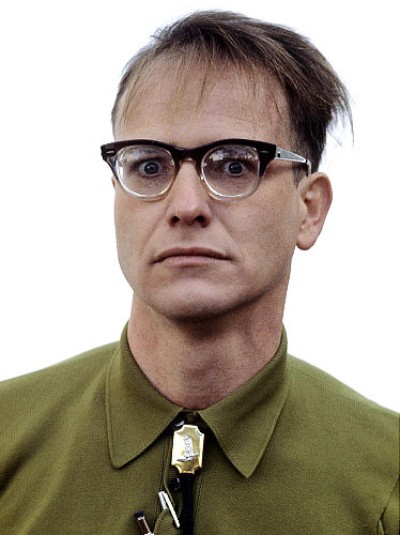Douglas Kenney (Douglas C. Kenney)

Kenney was born in West Palm Beach, Florida, and attended Gilmour Academy, near Cleveland, Ohio, for high school. While at Harvard University, Kenney was a member of the Signet society and editor of The Harvard Lampoon. There he was part of the first group of newcomers who restyled the college humor magazine. Another of these writers was Henry Beard, with whom Kenney frequently collaborated, and who became a lifelong friend. Together with Beard, he wrote Bored of the Rings, which was published during 1969. Kenney graduated in 1968. Soon after, he, Beard and fellow Harvard alumnus Robert Hoffman began work on founding the humor magazine National Lampoon. Kenney was one of the originating forces of what was to become known during the 1970s as the “new wave” of comedy, a dark, irreverent style of humor Kenney used as the basis for the magazine. Kenney was Editor-in-Chief from 1970 to 1972, Senior Editor 1973 to 1974, and Editor from 1975 to 1976. Kenney wrote much of the early material, such as “Mrs. Agnew’s Diary”, a regular column written as the diary of Spiro Agnew (or “Spiggy”)’s wife, chronicling her life amongst Richard Nixon and other famous politicians. The feature was an Americanized version of Private Eye’s long-running column “Mrs. Wilson’s Diary,” written from the viewpoint of Prime Minister Harold Wilson’s wife.
To escape the pressures of running a successful magazine, Kenney sometimes took unannounced breaks although, despite these absences, “Mrs Agnew’s Diary” was always submitted to the Lampoon. During one of these breaks he wrote a comic novel, “Teenage Commies from Outer Space”. Kenney threw the manuscript in a bin after a negative review from Beard. Beard later said that it was simply the wrong form and the spirit of the novel was channelled into National Lampoon’s 1964 High School Yearbook, which Kenney co-wrote with P. J. O’Rourke. Kenney had a five-year buyout contract with the Lampoon’s publisher, 21st Century Communications. Kenney, Beard, and Hoffman took advantage of this, dividing a sum of $7,000,000 among them. Kenney remained on staff until 1977. He quit to co-author the screenplay to National Lampoon’s Animal House, along with Chris Miller and Harold Ramis. Kenney had a small role in Animal House as fraternity brother “Stork,” with only two lines of dialogue. Stork’s key scene is at the end of the movie, when he sabotages the drum major and leads the parade. Kenney selected this role for himself. Produced quickly on a small budget, National Lampoon’s Animal House was, until Ghostbusters, the most profitable Hollywood comedy film.
Kenney produced and wrote Caddyshack with Brian Doyle-Murray and Harold Ramis. Kenney also had a small role in Caddyshack as a dinner guest of Al Czervik. When Caddyshack opened to negative reviews in July 1980, Kenney became deeply depressed, though Ramis joked that the film was “a six-million-dollar scholarship to film school.” At a press conference, Kenney verbally abused reporters and then fell into a drunken stupor. Concerned friends began asking Kenney to seek professional help, but by that time he was out of control, joking about previous suicide attempts, driving recklessly, and using increasing amounts of cocaine.
After the incident at the Caddyshack press conference, it became apparent that Kenney was ill. Kenney’s close friend Chevy Chase tried taking him to Kauai, Hawaii, hoping the relaxing environment would help him, but had to leave to get back to work. After Chase left, Kenney’s girlfriend, Kathryn Walker, came to keep him company, but she also had to leave to get back to work. Kenney had called Chase and invited him to come back out, and Chase was getting ready to leave when he got a telephone call that his friend was missing. Kenney died on August 27, 1980, aged 33, after falling from a 30-foot cliff called the Hanapepe Lookout. Police found his abandoned vehicle the following day; three days later, Kenney’s body was discovered stuck between 2 jagged rocks at the bottom of the cliff. His death was classified as “accidental” by Kauai police. About Kenney’s death, Harold Ramis famously quipped that Kenney “probably fell while he was looking for a place to jump”. Found in Kenney’s hotel room were notes for projects he had been planning, jokes, and an outline for a new movie. “We also found,” Chevy Chase told Rolling Stone magazine, “written on the back of a hotel receipt, a bunch of random thoughts that included the reasons why he loved Kathryn, and a gag line: ‘These last few days are among the happiest I’ve ever ignored.'” National Lampoon’s tribute to him was an editorial by Matty Simmons and a cartoon showing a sign next to the edge of a cliff with the inscription, “Doug Kenney Slipped Here.” Chris Miller, co-writer of Animal House, paid homage by naming the main character in his 1996 film Multiplicity Doug Kinney, a variation on and tribute to Kenney. About 26 years after his death, the book A Futile and Stupid Gesture: How Doug Kenney and National Lampoon Changed Comedy Forever was published, a biography on Kenney and the impact he made on comedy and the people he knew.
Born
- December, 10, 1946
- USA
- Palm Springs, Florida
Died
- August, 27, 1980
- USA
- Kauai, Hawaii
Cause of Death
- accidental fall
Cemetery
- Newtown Village Cemetery
- Newtown, Connecticut
- USA

